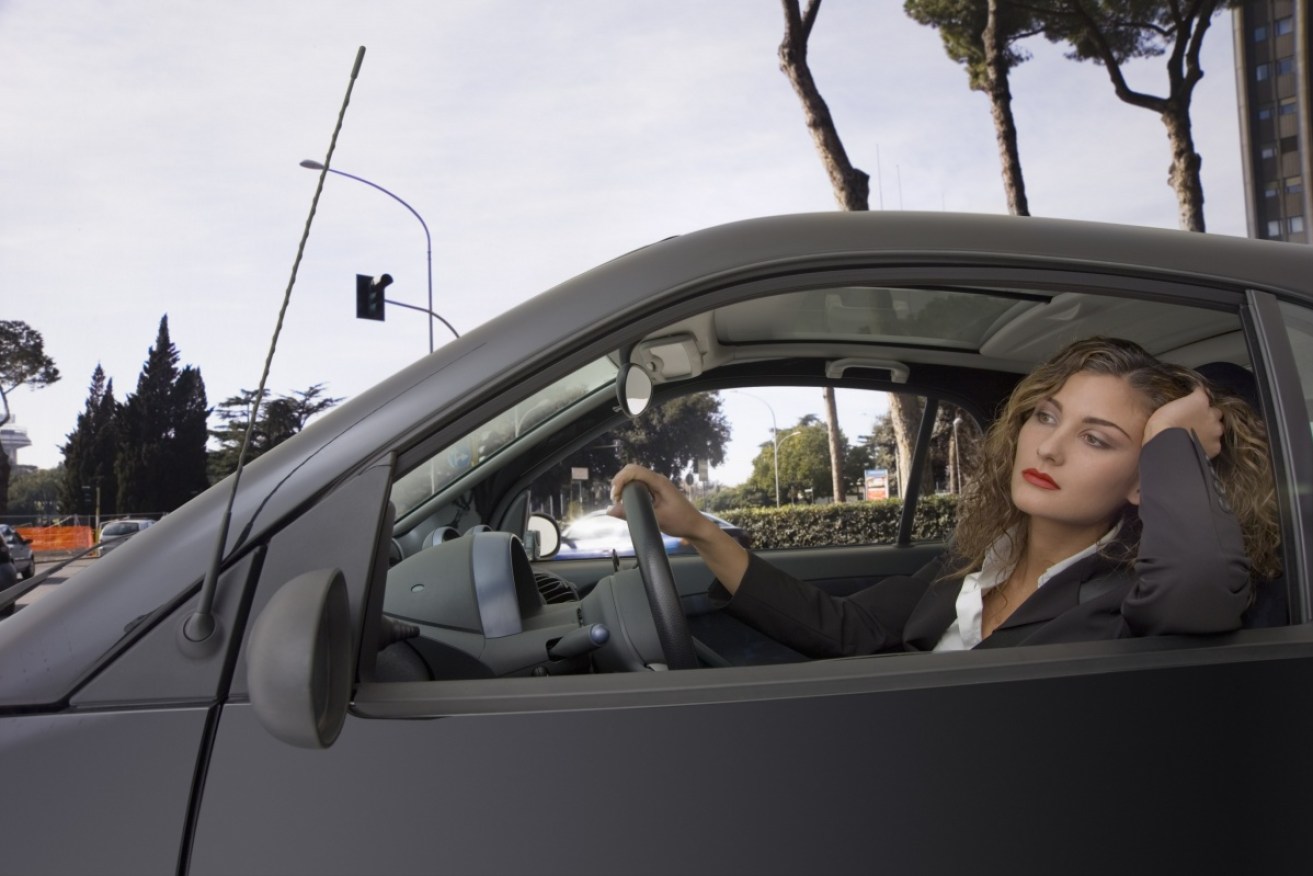Ford imagines a future without traffic lights – but it’s not a reality for Australia just yet


Ford imagines a future without traffic lights or stop signs with connected vehicles. Photo: Getty
Cars could run red lights and stop signs, but the reality of this happening on Australian roads is still years away amid safety concerns.
Ford has begun trialling Intersection Priority Management (IPM) technology with connected vehicle technology in the town of Milton Keynes in England.
The tech (video below) would enable cars to pass through intersections without stopping, either slowing down or speeding up to avoid other cars using a vehicle-to-vehicle communication (V2V), a Wi-Fi-like communications system that allows cars to send and receive signals.
But Associate Professor Dr Hussein Dia, from the Smart Cities Research Institute at Swinburne University of Technology, says Australia is not ready to embrace connected vehicle technology.
“There needs to be more research done before these types of vehicles can be tested on Australian roads,” Dr Dia told The New Daily.
“Equipment failure is of serious concern with connected vehicles. There needs to be an adequate redundancy system in place that can work if a computer or sensor fails,” he said.
He said he expected connected vehicle technology to become a reality by 2030.
“We’re going to see a lot of experiments and trials of this technology. But in terms of deployment on public roads, that’s going to take a while.”
Dr Dia said there were several challenges with Australian regulation that prevented it from adopting a ‘smart cities’ approach.
A smart city uses the data from devices and IoT (Internet of Things) sensors to improve transportation, better manage resources and alleviate problems such as congestion and pollution.
“We need to ramp up the regulation of these technologies, but it’s a challenge because lawmakers are still trying to come to terms with the advancements of connected and autonomous vehicles.
“Take Uber, for example. It took a while for it to be accepted in many states,” he said.

Connected vehicles are not a reality in Australia, experts say. Photo: Getty
Dr Patrick Moriarty, transport and world futures expert at Monash University, said autonomous and connected vehicles didn’t have a future in Australia.
“With fully automated vehicles where there’s not a driver and if an accident occurs – who’s to blame?” Dr Moriarty told The New Daily.
He said he didn’t foresee a future in Australia without traffic lights.
“I don’t foresee these vehicles bypassing traffic lights any time soon.
“Getting rid of stop signs is a possibility, but I don’t think these vehicles are going to greatly improve traffic congestion,” he said.
Deakin University’s Cyber Security Research Institute Professor Matt Warren said connected vehicles posed “catastrophic” cyber security risks.
“Hackers could change the settings so that the vehicles are programmed to cause serious mayhem, such as running down pedestrians,” Professor Warren told The New Daily.
He said he didn’t foresee connected vehicle technology becoming a reality in Australia for decades.
“We need years of trials for this type of technology.”
“Take for instance the recent autonomous vehicle trials in Melbourne which showed cars severely struggled when attempting hook turns,” he said.
The future of connected vehicles
Ford’s connected car technology will allow cars to broadcast their location, direction of travel and speed.
The car’s software analyses the trajectory of nearby vehicles and suggests an optimum speed for each vehicle to negotiate the intersection without stopping.
“Every year, the average driver spends two days waiting at traffic lights. And not only can junctions be frustrating, they are also the cause of up to 60 per cent of road traffic accidents,” Ford said in a statement.
“As well as saving time, avoiding stopping at junctions could also save fuel, as drivers avoid braking and accelerating away from the lights,” the company added.
Other features demonstrated by connected technology include collaborative parking, which builds a crowd-sourced map of a car park’s available spaces, and emergency vehicle warning, where drivers are advised of the location and distance of an approaching emergency vehicle.
Volkswagen has also partnered with German tech company Siemens to develop connected car technology in its home town of Wolfsburg.
The technology is being trialled in live traffic conditions to ascertain when all the traffic lights are green and alert the driver so that they can avoid unnecessary braking or acceleration.








